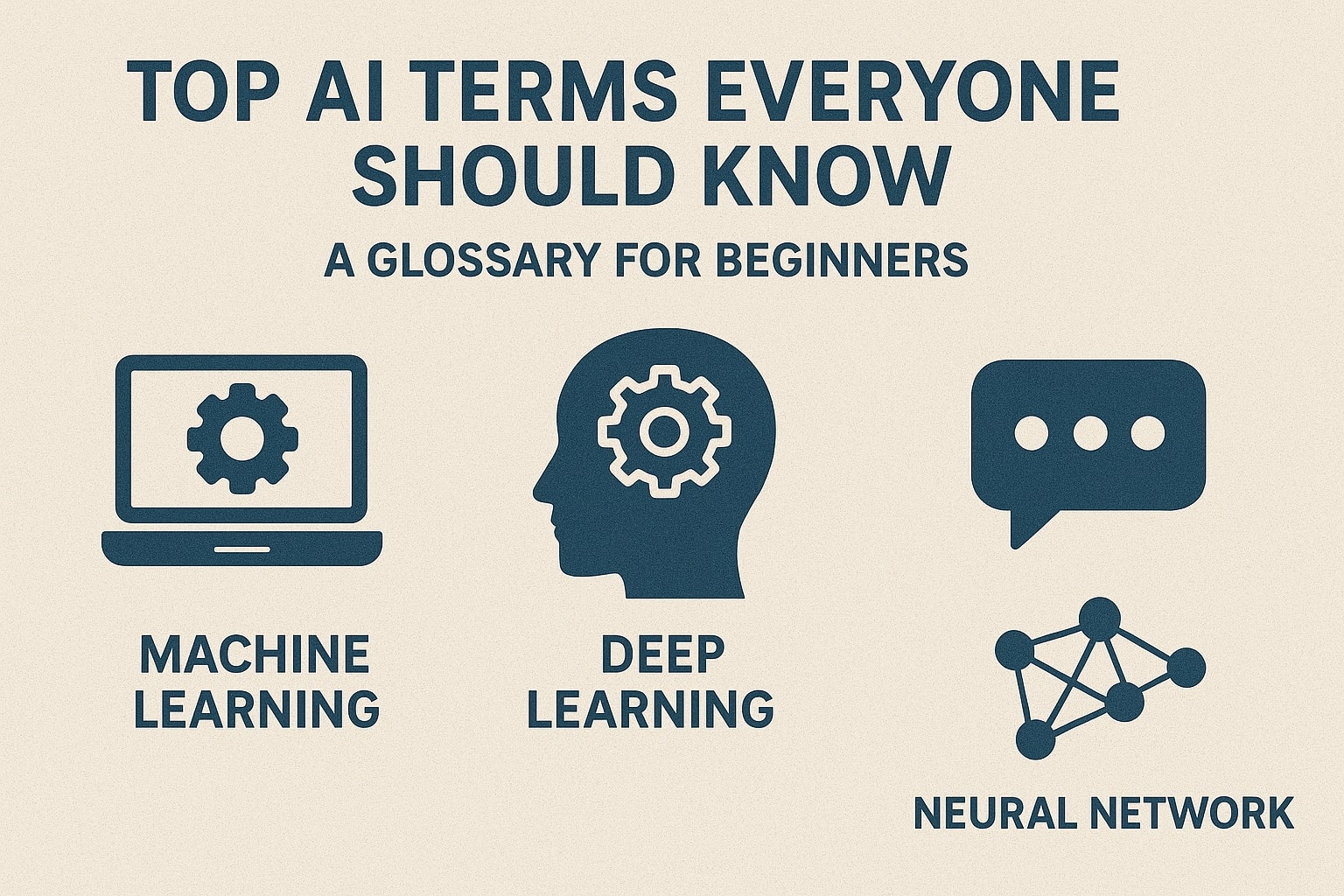The world of Artificial Intelligence is full of jargon that can be overwhelming for beginners. This AI glossary breaks down the most essential terms and AI algorithms in simple, easy-to-understand language. Therefore, you can use it as a quick reference whenever you encounter technical words. Bookmark this page as your go-to AI dictionary!
Core AI Glossary Terms
- Algorithm: A step-by-step set of instructions a computer follows to solve a problem or perform a calculation.
- Artificial Intelligence (AI): The field of creating machines and software that perform tasks requiring human intelligence. For more details, see the Stanford Encyclopedia of Philosophy.
- Machine Learning (ML): A branch of AI where systems learn and improve from data without explicit programming. In addition, IBM’s guide to machine learning provides practical examples.
- Deep Learning: A subset of ML that uses multi-layered neural networks to analyze patterns in large datasets.
- Neural Network: A computing model inspired by the human brain, where interconnected nodes process and respond to inputs.
AI and Language Processing
- Natural Language Processing (NLP): The ability of computers to understand, interpret, and generate human language.
- Large Language Model (LLM): An advanced AI model (like GPT) trained on massive amounts of text to produce human-like responses.
- Prompt Engineering: The practice of writing effective prompts that guide LLMs to deliver useful answers.
Learning Approaches in AI
- Training Data: The dataset used to teach a machine learning model to make predictions.
- Supervised Learning: A learning method where the model is trained on labeled data with correct answers.
- Unsupervised Learning: A method where the model identifies hidden patterns without labels.
- Reinforcement Learning: A process where an algorithm learns by performing actions and receiving rewards or penalties.
Challenges and Concepts in AI
- Algorithmic Bias: Errors in AI systems that lead to unfair outcomes, usually due to biased data. To avoid this, researchers carefully balance training datasets.
- Chatbot: A software application that simulates human conversation using NLP.
- Computer Vision: AI that interprets and understands images or videos.
- Transformer Model: A neural network architecture that revolutionized NLP by learning context within text.
Strong AI vs Weak AI
- Strong AI / AGI: A hypothetical AI with human-level intelligence across many tasks.
- Weak AI / Narrow AI: AI designed to perform a specific task, such as translation or recommendation engines.

Conclusion: Keep Exploring AI
This AI glossary covers the essential terms you need to understand AI algorithms and their applications. However, this is only a starting point. The field evolves
